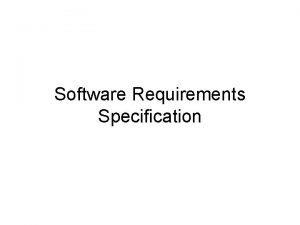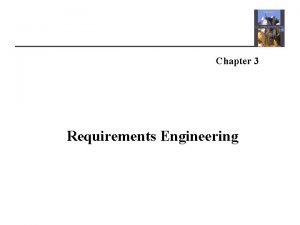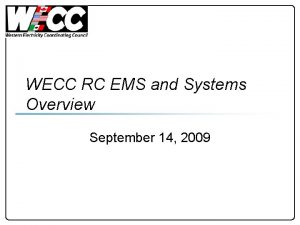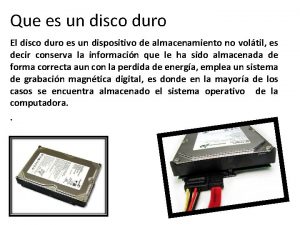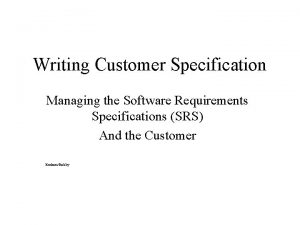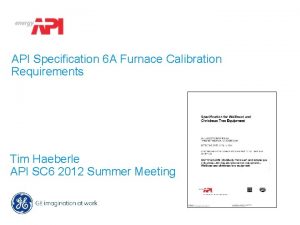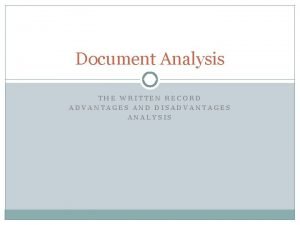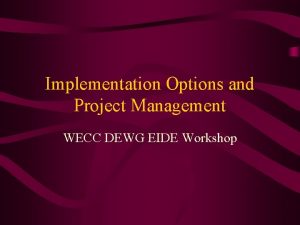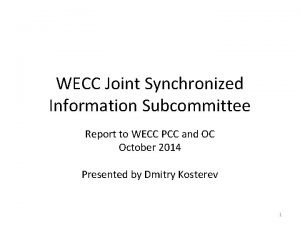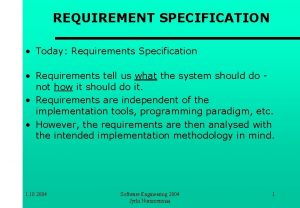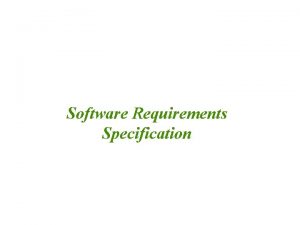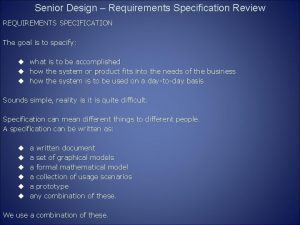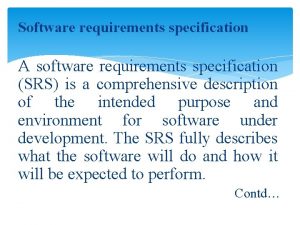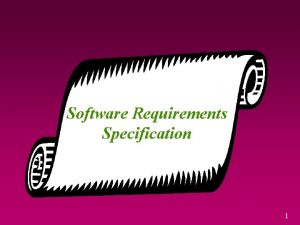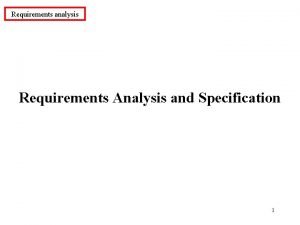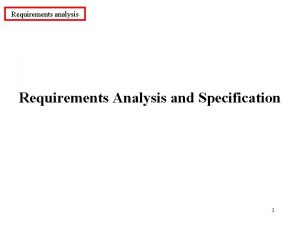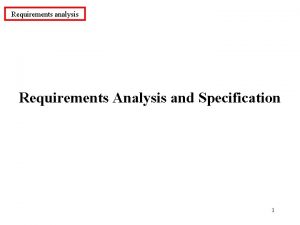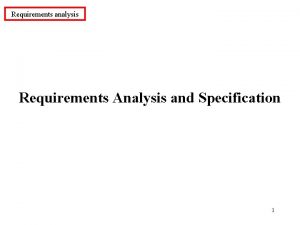EIDE System Requirements and Specification Documents WECC DEWG


















- Slides: 18

EIDE System Requirements and Specification Documents WECC DEWG EIDE Training

Overview ¨ What you will need to specify ¨ Identifying deliverables ¨ Specification boilerplate

What you will need to specify ¨ Network infrastructure ¨ Security ¨ Back office interfaces ¨ Data mapping ¨ Triggers ¨ Error conditions ¨ Redundancy

Network infrastructure ¨ How can you use your existing network infrastructure to meet your security and functionality requirements? ¨ Possibilities include: – Smart listener with code and access to back office through secure sockets or ports – Dumb listener with ability only to write documents – Somewhere in between

Security requirements ¨ Any design you create must meet your security requirements and should be reviewed by the 1300 compliance monitor. ¨ Firewall policy ¨ DMZ policy ¨ Authentication policy

Back office interfaces ¨ Which systems will you be getting data from and sending data to? ¨ How? Database, file, three tier? ¨ Can changes to the back office systems be isolated from the gateway? ¨ What methods will be implemented? ¨ How will you ensure reliability?

Data Mapping ¨ How will you flexibly map data between your system and others? ¨ EIDE protocol is flexible and allows various methods. ¨ Database structure and programming logic can allow any combination. ¨ Hierarchical approach can be used.

Triggers ¨ Timed transfers? ¨ Who sets these up and how? ¨ Manual transfers? ¨ What does the user interface look like? ¨ Will you do gets?

Error conditions ¨ What happens when you get an invalid inbound document? ¨ What happens when your database is temporarily down? ¨ What happens when you can’t find a path for a file write? ¨ What happens when the receiver system is down? ¨ How are timeouts and bad responses handled? ¨ Do you need acknowledgement?

Redundancy ¨ Dual internet connections through different vendors ¨ No single point of failure ¨ Hot standby configurations ¨ Parallel configurations ¨ Failover between database sessions

Identify Deliverables ¨ Based on what tasks are to be performed ¨ Assign responsibilities ¨ Specification documents can be created for each module with interfaces specified in each ¨ Deliverables may include: System Requirements Document, System Design Document, Database Design, Detailed Design, Technical Documentation, User Documentation, Data Dictionary or Glossary, RFP, Statement of Work

Specification boilerplate ¨ Introduction including project scope, specification overview, and description of existing systems ¨ Functional Requirements with subsections for each functional area ¨ User interface requirements ¨ Hardware and software requirements ¨ Sizing, expansion, performance, upgrade, testing ¨ Documentation and Training ¨ Maintenance

Functional Requirements ¨ Should specify “what” rather than “how” with exceptions where required ¨ Should allow for creative implementations ¨ Identify which methods will be required ¨ Identify any specific implementation requirements for back office interfaces – How 23 and 25 hour day is handled – How data is mapped

EIDE requirement examples ¨ Data sets containing a combination of EMS and Scheduling information can be configured to trigger each hour at HH: MM, each day at XX: MM, each week at XX: MM ¨ Data from EMS and scheduling system can be sent using either Put. Schedule or Put. Meter ¨ Messages received will be displayed at the _______ console in a popup box

EIDE Specification ¨ Compliance with schema and communications protocol document ¨ Ability to integrate schema modifications ¨ Functional requirements include validation of received documents based on your own business rules, back end system interfaces ¨ User interface requirements include both administrative and user.

EIDE Spec ¨ Functional requirements should also specify data translation requirements, whether gets will be used, etc. ¨ Should also include timing requirements if there any ¨ Be sure to include 23 and 25 hour day handling, data compression, error conditions, etc.

RFP and SOW boiler plate ¨ Needs to include: – Terms and conditions • Responsibilities, deliverables, schedule, disclosure, termination, performance, project rights, agreement on definition and handling of work outside scope, invoicing and payments, software license/ownership, etc. – Project organization and procedures – Any company specific requirements

Tool choices ¨ There are many good tools available for describing the functional requirements ¨ These include DFD, UML, relationship charts for database…
 Anderkendende
Anderkendende Upper specification limit and lower specification limit
Upper specification limit and lower specification limit Upper specification limit and lower specification limit
Upper specification limit and lower specification limit Software
Software System requirements specification
System requirements specification Ambulance dispatch system requirements specification
Ambulance dispatch system requirements specification Ems cortal
Ems cortal Wecc training
Wecc training Wecc balancing authority map
Wecc balancing authority map Helge eide ks
Helge eide ks Partes de un disco duro
Partes de un disco duro Cfir
Cfir Jill eide
Jill eide Which software
Which software Customer specification
Customer specification Volere process
Volere process Api requirements specification
Api requirements specification Advantages and disadvantages of running record observation
Advantages and disadvantages of running record observation Domain requirements in software engineering
Domain requirements in software engineering



